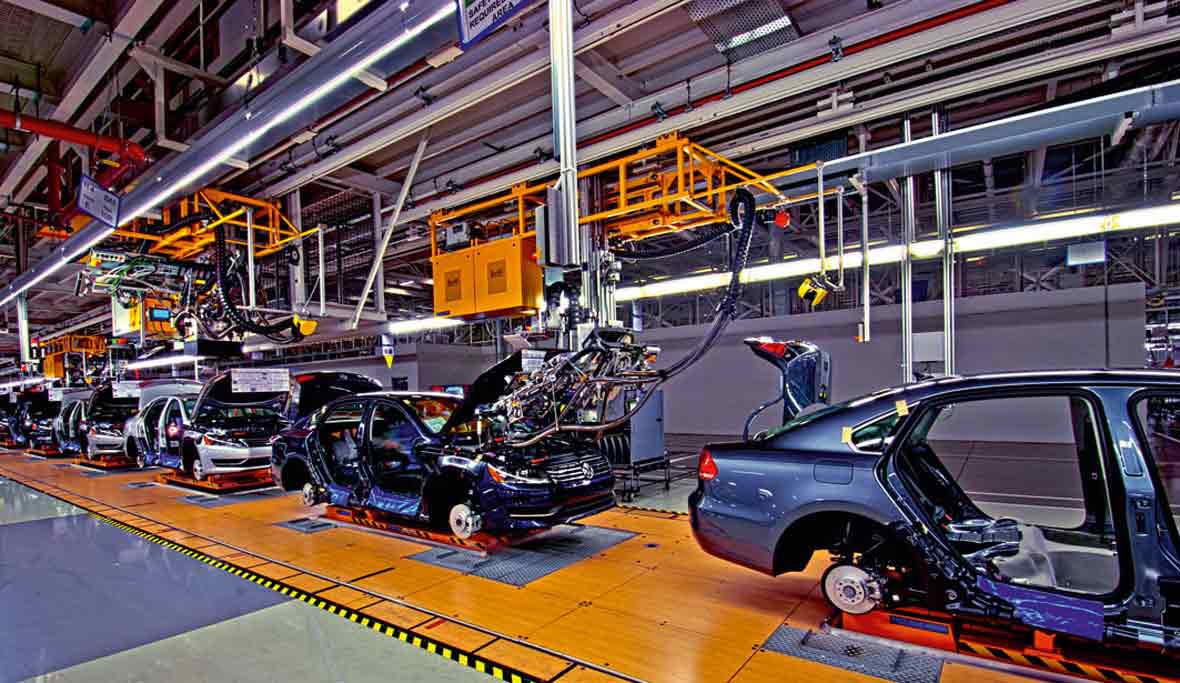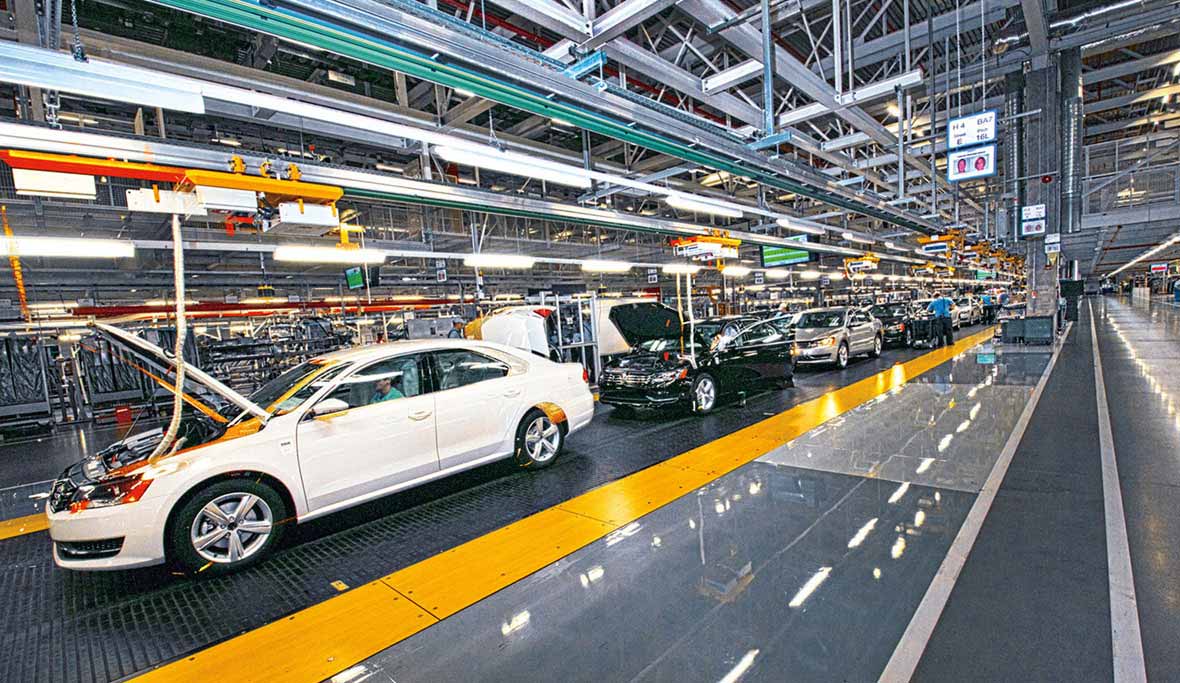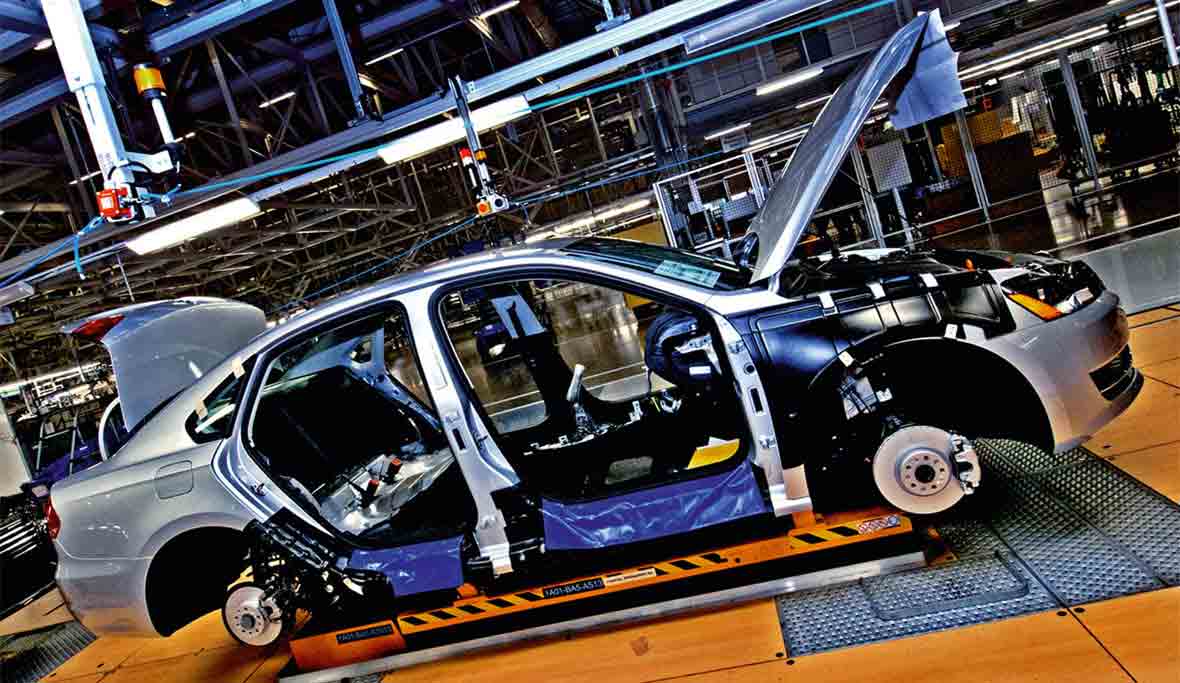Volkswagen Group of America Chattanooga
Chattanooga thinks blue
Not only the vehicles that are produced here are economical. The Volkswagen assembly plant in Chattanooga, United States amply demonstrates how resourcesaving and environmentally friendly automobile production can be. The TRILUX products play a key role in the plant, which went into operation in 2011, and is LEED Platinum-certified.
Volkswagen chairman of the board Professor Dr. Martin Winterkorn is well-known for his meticulousness and perfectionism. This is why the new start to North America's second-largest automotive company is the focus of his particular attention. The highly praised steam locomotive "Chattanooga Choo Choo" that travelled between New York and Chattanooga and at least made the name of the town famous all over the world is now a part of history. It was replaced by a new era in the automotive industry: with the inauguration of the Volkswagen site at Chattanooga in Tennessee, 24 May 2011 went down in company history as a day of pleasure and pride. A complete automotive factory was stamped out of the ground on an area of almost 6 square kilometres, and in only two years.
This is where the American Passat is manufactured, the only car in its segment featuring petrol-saving Clean Diesel technology. Each year more than 2500 employees construct up to 150,000 cars here. Volkswagen has invested around US$1 billion in the development of the Chattanooga location. The new building complex complies with maximum demands of the American standard LEED (Leadership in Energy and Environmental Design). This norm stipulates high requirements for sustainable and environmentally protective building as well as the equipping of buildings. The works for example are the very first Volkswagen site with complete LED outdoor lighting. The production halls and offices are equipped only with energy-saving lamps.



This measure has certainly paid off: the Volkswagen works have now received the platinum LEED certificate. The LEED seal of approval is awarded in four quality levels by the U.S. Green Building Council (USGBC), and the Chattanooga production location is up until now the only automotive factory with platinum certification. "Volkswagen worldwide is committed to sustainable mobility and environmentally compatible production processes. We're very proud that our Chattanooga site has achieved the LEED platinum certification, and it confirms that we're on the right way," explained Hubert Waltl, member of the board of the Volkswagen car brand for the Production and Logistics business segment. "Chattanooga is now a benchmark for all Volkswagen factories across the world," added Waltl.
Lighting challenges
Initially, the challenge was grappling with the American standards and dimensions that strongly deviate from the European standard. As is well known, American socket outlets have a voltage of 110 V, corresponding to around half of the German value. But lighting in U.S. industrial buildings often has a further circuit, in this case with a voltage of 277 V. Americans also measured distances in feet (ft), and thus a US fluorescent lamp with a length of 4 feet does not correspond exactly to a German fluorescent tube with a length of 1.2 metres.
US installers are also not familiar with mounting rails for installing modern European luminaires. "USA electricians route cables in galvanised steel tubes that are continuously fixed to the ceilings, but then only allow room for the connection of single luminaires," chartered engineer Matthias Strutz reported from the Volkswagen factory planning division in Wolfsburg on his initial experiences on-site in Chattanooga. After Strutz declared the trunking system as mandatory for the new American Volkswagen factory, installers began their work.
Up until the inauguration of the factory, US engineers installed the TRILUX E-Line luminaire system to a total length of 34 kilometres in the Volkswagen factory halls at Chattanooga. Added to this were several thousand luminaires for offices and corridors. "This means that TRILUX has supplied around 90% of indoor lighting for Chattanooga," reported Anton Wanninger, Key Account Manager for the Arnsberg luminaire manufacturer. Those responsible at Volkswagen were in the end convinced by the levels of energy efficiency of the TRILUX products.
"Thanks to the TRILUX luminaires we were able to cut power consumption of factory lighting from around 6 watts to 4 watts per square metre," confirmed Volkswagen planner Strutz. For the Volkswagen factory in Chattanooga, this means a saving of around a third of energy costs normally used for lighting. Reason enough for the Volkswagen company to stick with TRILUX for further global expansion operations – for example in China, Brazil or Malaysia.